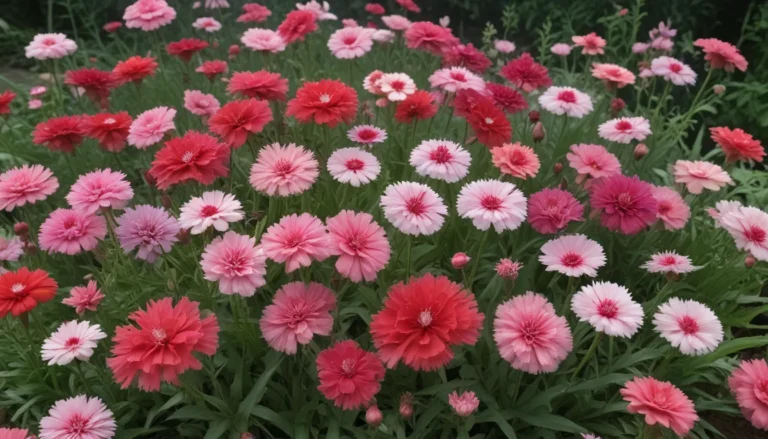A Comprehensive Guide to Growing and Caring for Hickory Trees

If you’re looking for a tree that combines beauty with functionality, look no further than hickory trees. Native to North America, China, and Indochina, the Carya genus includes 19 different species of hardwood, deciduous trees known for their pinnately compound leaves, yellow-green flowering catkins, and tasty, edible nuts.
Hickory trees play a vital role in the ecosystem by providing a high-protein, high-fat food source for various animals. Humans also enjoy hickory nuts and use hickory wood for a variety of products, including wood-burning stoves and smoking meat for barbecue.
In this in-depth article, we’ll explore everything you need to know about growing and caring for hickory trees. From cultivation and history to propagation, growing tips, pruning, and more, we’ll cover it all to help you successfully cultivate these amazing plants in your garden.
Cultivation and History of Hickory Trees
Humans have been utilizing hickory trees for thousands of years. Archeological evidence shows that human usage of hickory and pecan dates back to 6900 BCE in what is now Illinois. The word “Carya” originates from an Ancient Greek myth, and Native American mythology also tells stories of the importance of hickory trees.
European settlers and Americans used hickory wood for a variety of products, from barrel hoops to airplanes. The history and cultural significance of hickory trees make them a truly fascinating plant to grow.
Propagation Methods for Hickory Trees
Hickory trees can be grown from seeds or transplanted saplings. Proper propagation is essential for ensuring healthy tree growth and nut production. Before planting, hickory seeds require stratification, a process that can be done in the fall or indoors using a peat moss and sand mixture.
Transplanting saplings is another effective propagation method. When transplanting, be sure to select a suitable planting location with proper soil conditions and planting techniques to ensure successful growth.
Starting from Seed
- Stratify seeds in the fall or indoors.
- Plant seeds in well-drained soil.
- Keep soil moist until seeds germinate in 4-8 weeks.
Transplanting
- Select and prepare planting area.
- Transplant saplings in early spring or fall.
- Water planting site prior to digging.
How to Grow Healthy Hickory Trees
Before planting hickory trees, it’s essential to ensure the soil has an acidic to neutral pH and is highly fertile. Regular fertilization, good drainage, and proper irrigation are key factors in successful hickory tree growth.
Hickory trees thrive in full sun or partial shade and require annual fertilization to maintain optimal health. Proper soil drainage, irrigation, and fertilization are crucial for growing healthy hickory trees.
Growing Tips
- Choose a sunny location.
- Keep the soil moist until established.
- Fertilize annually in the fall or spring.
Pruning, Maintenance, and Disease Management
Pruning is essential to maintain healthy hickory trees. Removal of diseased or damaged limbs, proper pruning techniques, and weed management are vital for tree health. Keeping hickories healthy can help prevent common diseases such as anthracnose and cankers.
Regular maintenance, proper pruning, and disease prevention measures are necessary to ensure the long-term health of hickory trees.
Selecting Hickory Tree Species
There are 19 species within the Carya genus, each with unique characteristics. Shagbark hickory, shellbark hickory, and pecan are popular species known for their edible nuts and wood quality. Selecting the right species for your garden based on desired characteristics is crucial for successful cultivation.
Managing Pests and Diseases
Hickory trees are susceptible to pests and diseases that can affect tree health. Understanding common pests like hickory bark beetles and diseases like anthracnose is essential for effective management.
Proper identification of pests and diseases, along with appropriate control measures, can help prevent damage to hickory trees and ensure healthy growth.
Herbivores
- Protect seeds from rodents.
- Install chicken wire cages or mesh covers.
Insects
- Control hickory bark beetles with insecticide.
- Apply insecticide for hickory gall aphids prior to bud swell.
Disease
- Prevent disease through healthy plant maintenance.
- Address canker and witches’-broom with proper care.
Harvesting and Preserving Hickory Nuts
Harvesting hickory nuts can be a rewarding experience. Proper harvesting techniques, nut quality assessment, and preservation methods are essential for enjoying the delicious nuts for an extended period.
Understanding when and how to harvest, as well as preserving hickory nuts, ensures the best quality for consumption.
Best Uses of Hickory Trees
Hickory trees have a wide range of uses, from providing shade and visual interest in landscapes to yielding quality wood for various products. The edible nuts, durable wood, and ecological value of hickory trees make them a versatile and valuable addition to any garden.
From tool handles to smoking meats, hickory trees offer a variety of uses that make them a popular choice for gardeners and woodworkers alike.
Quick Reference Growing Guide for Hickory Trees
This guide provides a summary of key information for growing and caring for hickory trees. Understanding planting requirements, maintenance tips, and common pests and diseases can help you successfully cultivate healthy hickory trees in your garden.
Quick Reference Growing Guide
- Hardiness Zone: 4-8
- Exposure: Full sun, partial shade
- Plant Type: Deciduous tree
- Maintenance: Low
Conclusion
Hickory trees are fascinating plants with a rich history and unique characteristics that make them a valuable addition to any garden. By following proper cultivation and care techniques, you can enjoy the beauty, functionality, and ecological benefits of hickory trees in your landscape. With the knowledge and tips provided in this guide, you’ll be well-equipped to grow and care for hickory trees successfully. So, get ready to plant your hickory tree and enjoy the many benefits it has to offer!
For more information and tips on growing nut trees, be sure to check out our other guides on almond trees, hazelnut trees, and chestnuts. Happy gardening!
This comprehensive guide provides valuable information and tips for readers interested in growing and caring for hickory trees. By incorporating new sections, tips, and information, along with an engaging, conversational tone, the article aims to educate and inform readers about the unique characteristics and cultivation requirements of hickory trees.





